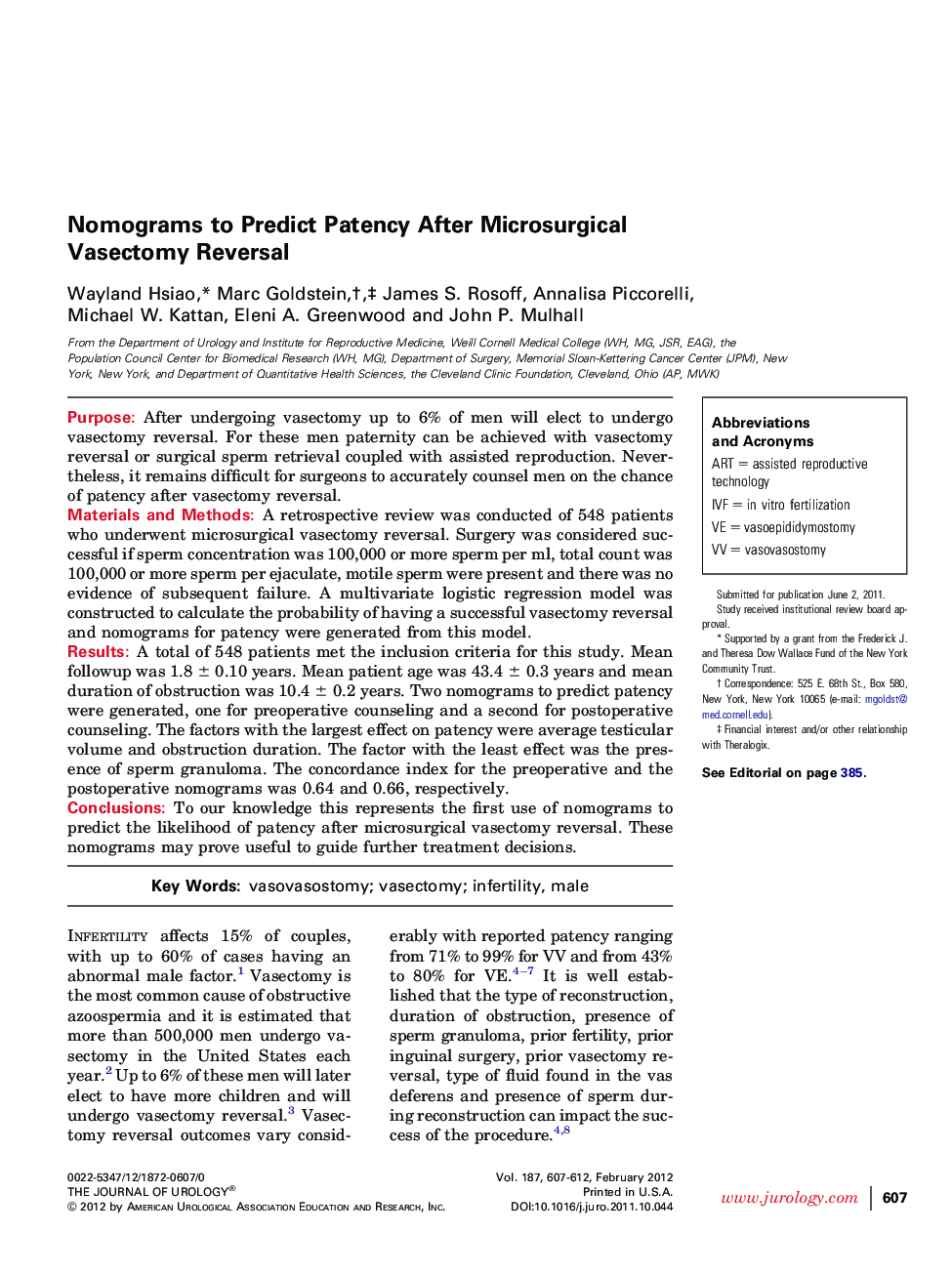| Article ID | Journal | Published Year | Pages | File Type |
|---|---|---|---|---|
| 3869659 | The Journal of Urology | 2012 | 6 Pages |
PurposeAfter undergoing vasectomy up to 6% of men will elect to undergo vasectomy reversal. For these men paternity can be achieved with vasectomy reversal or surgical sperm retrieval coupled with assisted reproduction. Nevertheless, it remains difficult for surgeons to accurately counsel men on the chance of patency after vasectomy reversal.Materials and MethodsA retrospective review was conducted of 548 patients who underwent microsurgical vasectomy reversal. Surgery was considered successful if sperm concentration was 100,000 or more sperm per ml, total count was 100,000 or more sperm per ejaculate, motile sperm were present and there was no evidence of subsequent failure. A multivariate logistic regression model was constructed to calculate the probability of having a successful vasectomy reversal and nomograms for patency were generated from this model.ResultsA total of 548 patients met the inclusion criteria for this study. Mean followup was 1.8 ± 0.10 years. Mean patient age was 43.4 ± 0.3 years and mean duration of obstruction was 10.4 ± 0.2 years. Two nomograms to predict patency were generated, one for preoperative counseling and a second for postoperative counseling. The factors with the largest effect on patency were average testicular volume and obstruction duration. The factor with the least effect was the presence of sperm granuloma. The concordance index for the preoperative and the postoperative nomograms was 0.64 and 0.66, respectively.ConclusionsTo our knowledge this represents the first use of nomograms to predict the likelihood of patency after microsurgical vasectomy reversal. These nomograms may prove useful to guide further treatment decisions.
